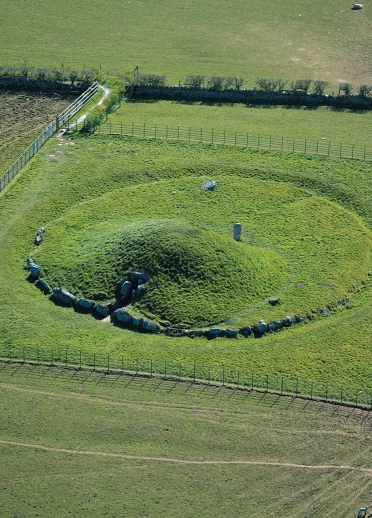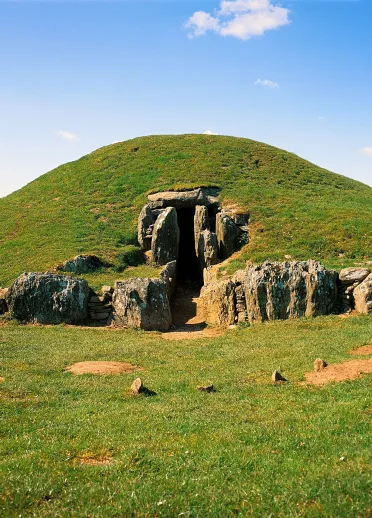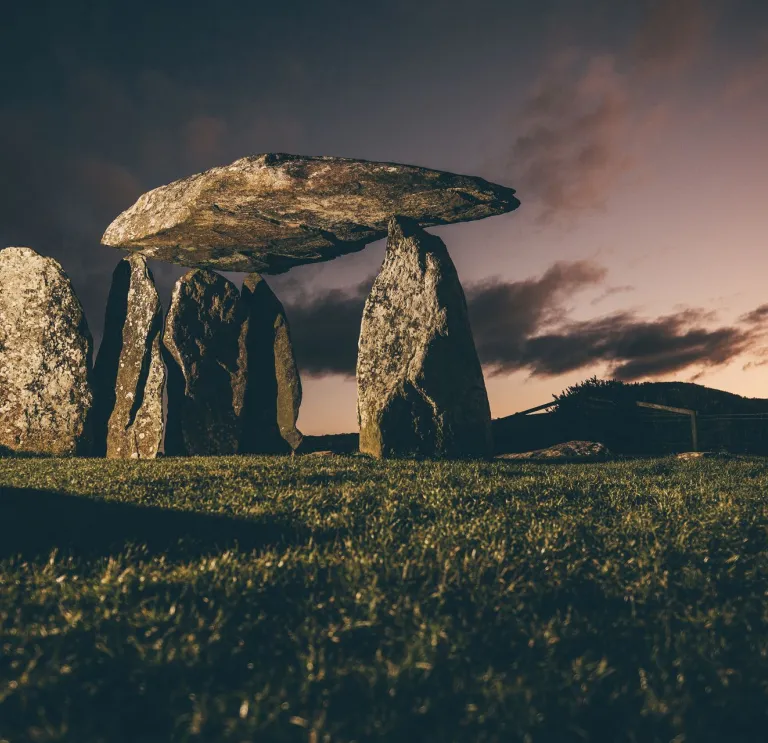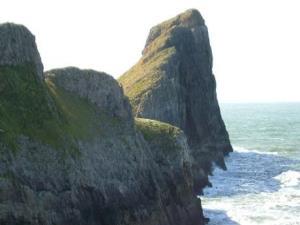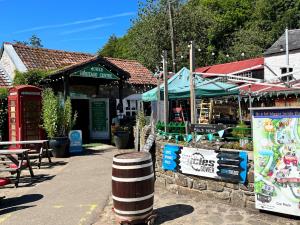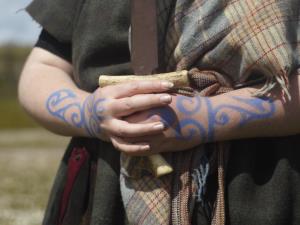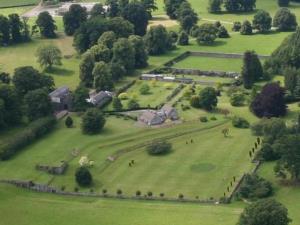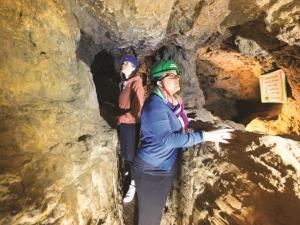South Wales: Titanic tombs, ceremonial stones and cave rituals
You scarcely have to venture outside Cardiff before Wales’ prehistoric past reveals itself. Gracing a wood-flanked meadow near St Fagans National Museum of History, Tinkinswood Burial Chamber is one of Britain’s mightiest chambered tombs, raised 6000 years ago and found to contain the remains of some 50 skeletons! What is believed to be the biggest capstone of any Neolithic burial chamber in Britain tops the tomb: a whopping 7.25-metre slab weighing 40 tons.
Tombs like this – formed by a number of upright stones supporting a horizontal stone on the top – are called a 'cromlech' in Wales, and you can navigate a labyrinth of country lanes from here to another spectacular and equally ancient close-by cromlech, St Lythan’s Burial Chamber. This tomb was constructed so that the sun shines directly during through the entrance at summer and winter equinoxes.
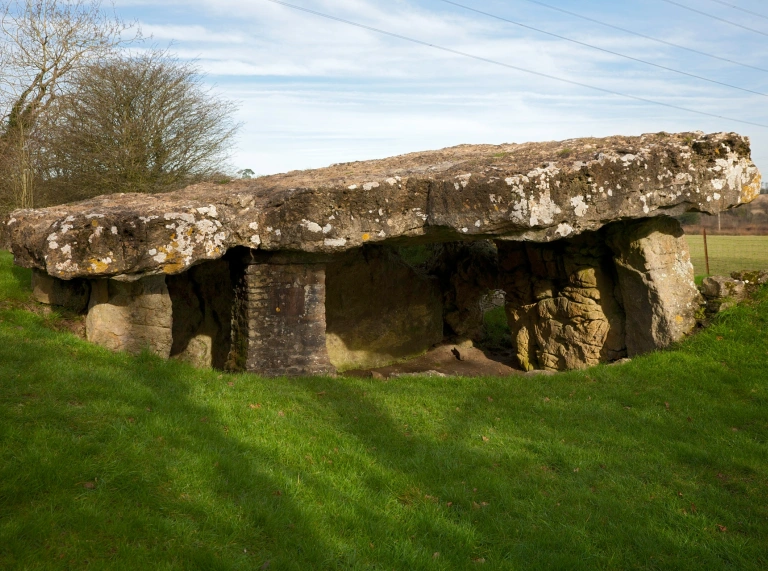
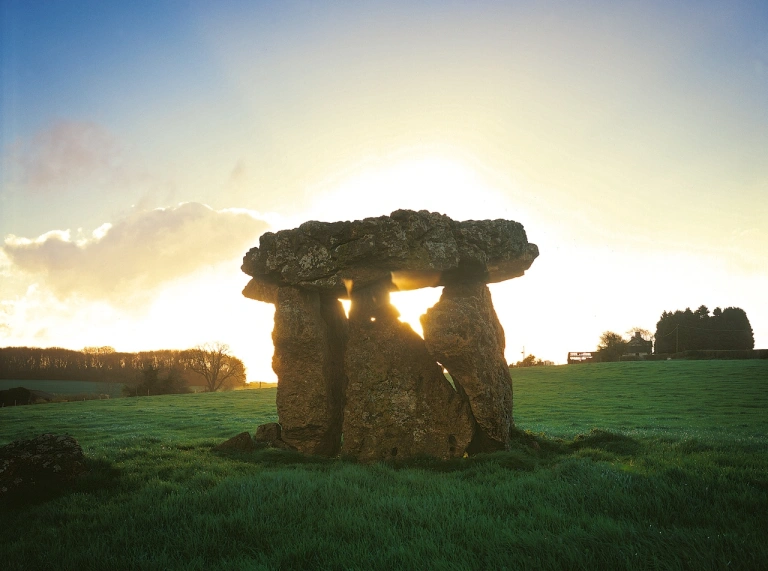
The liberal spread of megaliths across South Wales comes with its A-listers – and its utterly un-listed! One of the more famous is Pontypridd Common’s Rocking Stone. A bombastic boulder deposited during the last Ice Age, it became the de facto place for local gatherings during past centuries and, during the Victorian era had a stone circle erected around it.
Another gem, Carn Llechart on the hills above Pontardawe is not even marked on most maps. Thought to be a stone circle or another sort of prehistoric ritual burial site known as a ring cairn, and in a great state of preservation, it stands on the moorland leg of the mesmeric Cwm Clydach walk: a special, mystery-shrouded spot.
West Wales’ prehistoric colossuses
The UK’s first National Landscape (formerly AONB), the beach-bounded Gower peninsula is full of ancient history. Europe’s first-known ritual burial, and thus the very first trace of Homo sapiens in Wales, happened here in Paviland Cave on a craggy, cove-lined stretch of shore near Rhossili and Worm’s Head. Strangely, the ‘Red Lady of Paviland’ – originally deemed to be the remnants of a Roman woman – transpired to be a young male hunter-gatherer from 34,000-odd years ago, during the last Ice Age.
Our forebears in megalithic Wales were a creative bunch: Cathole Cave at Parc Le Breos is engraved with a reindeer that stands in as Britain’s oldest specimen of rock art, harking back at least 14,000 years. Visit the cave and the Park Le Breos Burial Chamber on a walk from the Gower Heritage Centre. It’s 1¼ miles (2.2km) out and back on a quiet lane.
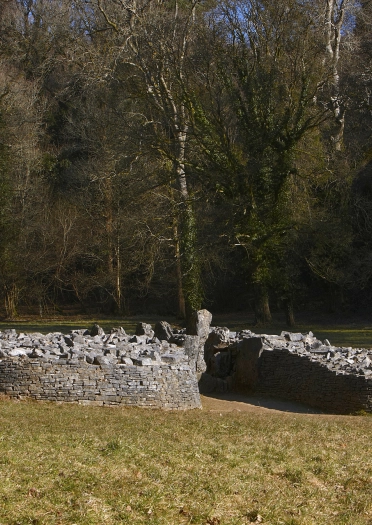
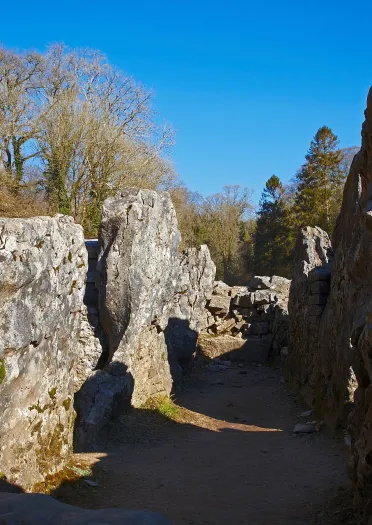
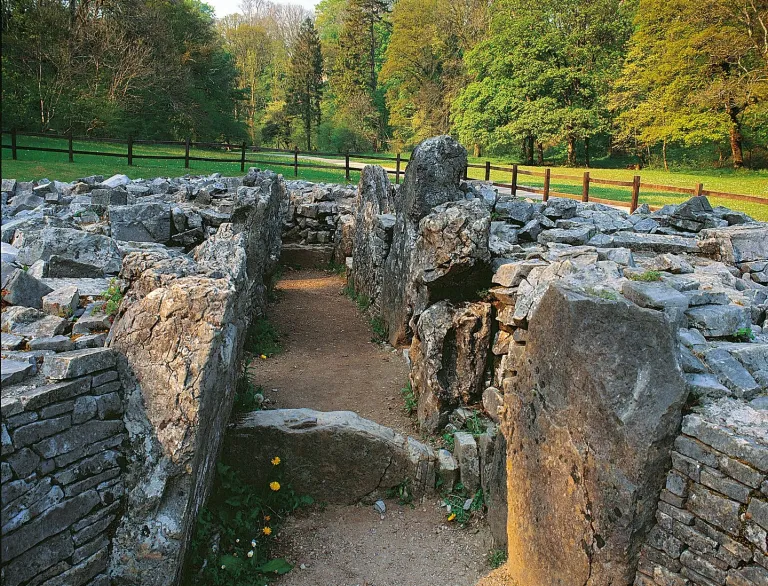
Pembrokeshire’s photogenic coast steals the show in Southwest Wales but its lesser-known inland uplands rock some of the most formidable queens of the Welsh Stone Age.
One walk along the backbone of the lonesome Preseli Hills takes in many of the best. The Golden Road, purportedly part of a trade route along which gold mined in Ireland’s Wicklow Mountains was transported, is a prehistory-packed 7-mile hike full of formidable ancient sites.
You begin near Bronze Age burial cairn Foel Eryr, and skirt eye-shaped stone circle Bedd Arthur, one of many locations in Wales associated with the burial place of King Arthur, before finishing your adventure clambering the Iron Age hill fort of Foel Drygarn. The area is entrenched in Arthurian legend. In the Mabinogion, King Arthur and his knights had a ferocious skirmish with a boar on the walk’s Cwm Cerwyn - and the scatterings of rocks on Cerrigmarchogion are said to be the graves of the casualties! Near the rugged ramble’s start, a group of one standing and three fallen standing stones at Waun Mawn mark the location of one of the UK’s biggest Neolithic stone circles.
The Preseli Hills also provide the backdrop for one of Wales’ largest and most fabled burial chambers, Pentre Ifan. The show-stopper is the precarious manner in which the whopping 5-metre-long capstone appears balanced on its stone supports - it looks like an ancient optical illusion - though it has perched here perfectly well for 5000 years!


For full initiation in the Iron Age, make time for the last chapter of the Megalithic era that lasted from about 800BC up to the arrival of the Romans - and no wild walk is required. Instead, you can head to Castell Henllys Iron Age Village on the edge of the Preseli, where roundhouses (typical Iron Age dwellings) have been reconstructed on the exact site where they stood two millennia ago: the only place in the UK where this has been done! Iron Age costumed characters, representing members of the Demetae tribe that once lived in this part of Wales, are on hand to impart their knowledge and demonstrate the crafts and tasks of daily life before recorded history began.
Mid and North Wales: Hulking hill forts, strange circles and Bronze Age mines
Mountainous Mid and North Wales set the stage for some especially impressive monuments. Sheltering below Pen y Fan in Bannau Brycheiniog (Brecon Beacons) National Park on the Glanusk Estate is the talismanic Penmyarth Fish Stone: Wales’ tallest ancient standing stone at 4.5 metres high. The estate is private, so permission must be sought for access: staying in one of the estate’s accommodations and making this your megalithic morning walk is a superb way to visit.
North Wales is flanked either side by two huge hill forts. Tre’r Ceiri, straddling a boulder-strewn 1600-foot hilltop on the Llŷn Peninsula, is perhaps the UK’s best-preserved: the remains of many ramparts, roundhouses and entranceways giving some great insights into late Iron Age life can all clearly be discerned. It continued to be used as a hill fort throughout Roman occupation of Britain, until the fourth century AD.
Over east in the Clwydian Range, several of the highest summits are crowned in hill forts. Wales’ largest, carving out the top of Penycloddiau, sprawls over 50 acres: while its construction was Iron Age, Bronze Age tools have been discovered here. This again shows that such monuments were important to many peoples across many eras.
The prize for the most surreal prehistoric attraction goes to Bronze Age curiosity Bryn Cader Faner. This unusual stone circle or ring cairn is set within a rich stomping ground of megalithic sites on hilly ground east of Talsarnau near Harlech. The oddest thing about it is the shape, said to resemble a crown of thorns, with its mound of rocks rimmed in standing stones all leaning outwards. From a distance, it looks a little like the spine of a huge Neolithic hedgehog!
Moel ty Uchaf is one of Wales’ finest stone circles. This is complete circle of 41 stones standing strikingly stands atop a grassy hill in the remote Berwyn Mountains, with the gorgeous panorama of the Dee Valley far below.
Charming Victorian seaside resort Llandudno also hosts a far more ancient attraction above the beachfront fun. Bronze Age miners dug out subterranean passageways on Great Orme headland to source copper, all the more incredible for being excavated using basic bone and stone implements. Today Great Orme Mines are the oldest metal mines open to the public anywhere on the planet, first worked 3500 to 4000 years ago.
Anglesey is an excellent place to conclude your travels around prehistoric North Wales. The island’s archaeology is characterised by high numbers of ceremonial burial chambers. The most fascinating, Bryn Celli Ddu, ranks among the UK’s most dramatic passage tombs. Adding to the aesthetics is that this part-Neolithic, part-Bronze Age site is still covered by a turf mound: while many such tombs would originally have been similarly covered, most no longer are. An 8.5-metre-long passage leads through the mound to a stone-encased burial chamber, the back wall of which is open to the outside. The best time to come is the morning of midsummer’s day, when the rising sun shoots a beam of light directly down the length of the passage to illuminate the burial chamber: a little piece of megalithic magic.
